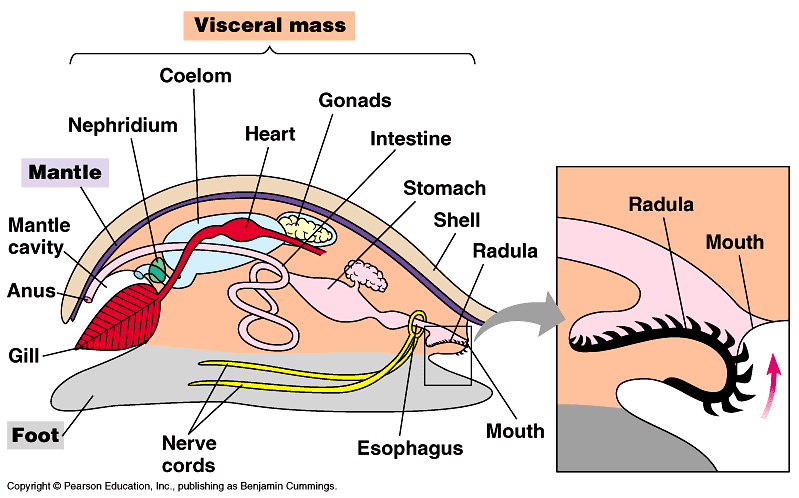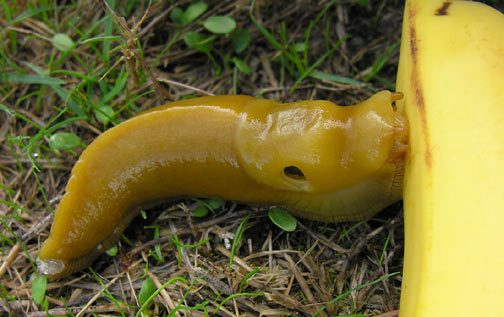Adaptation
 Through many millions of years snails have
adapted in order to live on land. The
modifications that they have undergone allow
them to live out of the water,
and living in moist environments help them to
preserve water, though other species of snail
have been found to flourish in the desert.
Through many millions of years snails have
adapted in order to live on land. The
modifications that they have undergone allow
them to live out of the water,
and living in moist environments help them to
preserve water, though other species of snail
have been found to flourish in the desert.
In order to aid in water loss terrestrial snails
secrete a shell from the mantle (seen left) and the production of mucus. They also
have evolved their gill to a lung through which
air enters the pneumostome (hole in the banana
slug, below).

Terrestrial snails have well developed sensory organs of touch, smell, taste, and vision. Most terrestrial snails have four tentacles, as the Brilliant Granule does. The lower two are used as feelers, while the top two are stalks for which the eyes sit.
In addition to the eyes as a great sensory organ, tentacles aid in the snail's knowledge of its surroundings (Body parts and organs). Snails have two tentacles packed with cells to sense both taste and smell used for locating food or perhaps a mate (Body parts and organs). Snails also have lips to help find food based off taste (Body parts and organs). Note: This is not a Guppya Sterkii